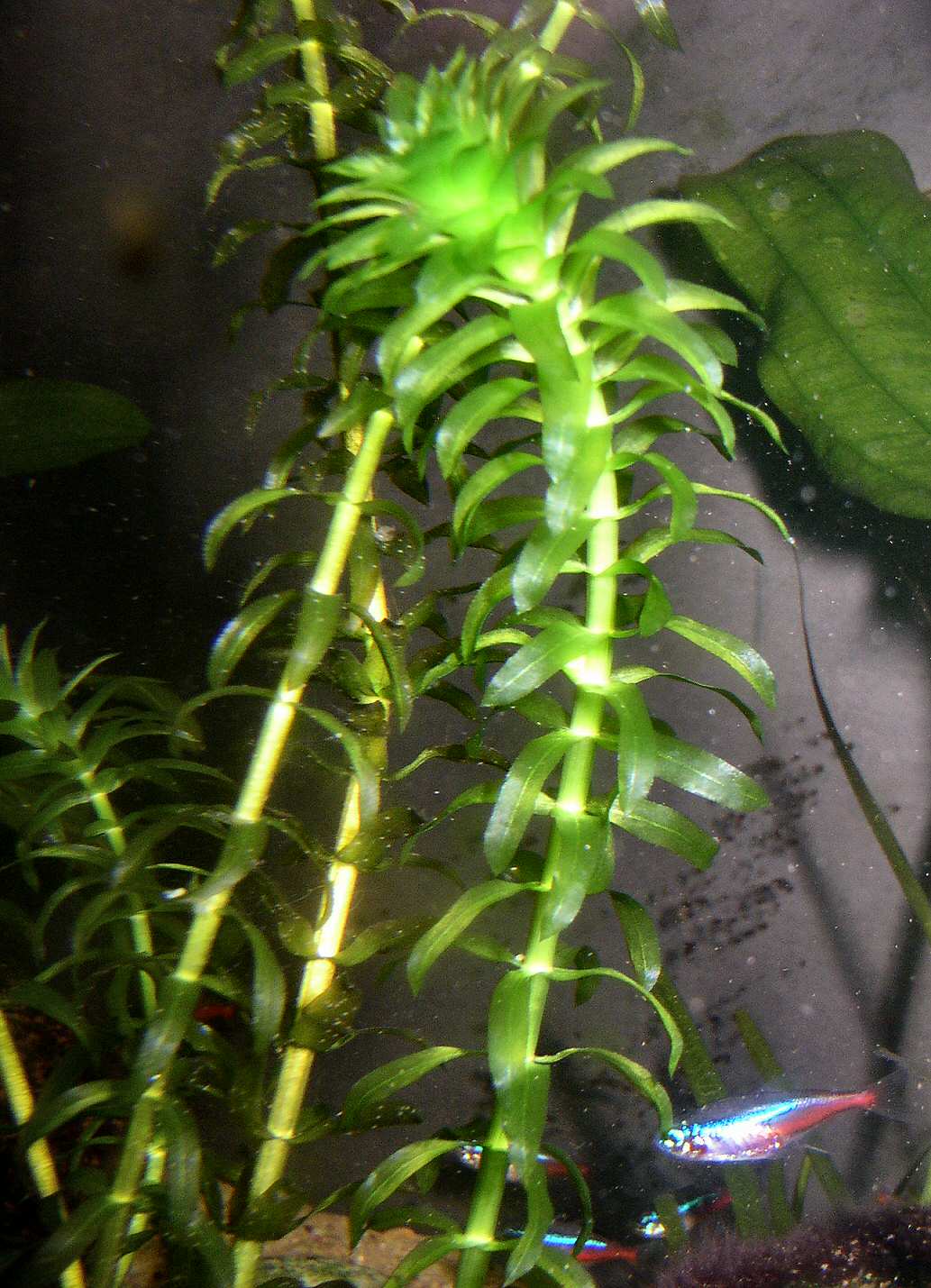- Egeria densa
Taxobox
name = "Egeria densa"

image_width = 240px
image_caption = Egeria Densa
regnum =Plant ae
divisio = Magnoliophyta
classis =Liliopsida
ordo =Alismatales
familia =Hydrocharitaceae
genus = "Egeria"
species = "E. densa"
binomial = "Egeria densa"
binomial_authority =Planch. "Egeria densa" (syn. "Anacharis densa" (Planch.) Vict., "Elodea densa" (Planch.) Casp.; Large-flowered Waterweed or Brazilian Waterweed) is a species of "Egeria" native to warm temperate
South America in southeasternBrazil ,Argentina , andUruguay .Germplasm Resources Information Network: [http://www.ars-grin.gov/cgi-bin/npgs/html/taxon.pl?400175 "Egeria densa"] ]It is an
aquatic plant growing in water up to 4 m deep, with trailings stems to 2 m or more long, producing roots at intervals along the stem. The leaves are produced in whorls of four to eight, 1–4 cm long and 2–5 mm broad, with an acute apex. It is dioecious, with male and femaleflower s on separate plants; the flowers are 12–20 mm diameter, with three broad, rounded, white petals, 8–10 mm long on male plants, and 6–7 mm long on female plants.Flora of NW Europe: [http://ip30.eti.uva.nl/BIS/flora.php?selected=beschrijving&menuentry=soorten&id=4167 "Egeria densa"] ] Flora North America: [http://www.efloras.org/florataxon.aspx?flora_id=1&taxon_id=220004601 "Egeria densa"] ] Jepson Flora: [http://ucjeps.berkeley.edu/cgi-bin/get_JM_treatment.pl?Egeria+densa "Egeria densa"] ] Washington Department of Ecology: [http://www.ecy.wa.gov/programs/wq/plants/weeds/aqua002.html "Egeria densa"] ]Cultivation and uses
Egeria densa is a popular
aquarium plant, but is no longer sold in some areas due to its invasive potential. Plants in cultivation are all a male clone, reproducing vegetatively.It grows well in the cooler
aquarium and is suitable for the beginner. It is easily propagated by cuttings.According to reports (cf. Tropica link) it secretes antibiotic substances which can help prevent blue-green algae. It grows best in a nutriment rich, high light situation.As an invasive species
"Egeria densa" has escaped from cultivation and become naturalized and invasive in many warm temperate to subtropical regions of the world, including
Europe , southernAfrica ,Asia ,Australia ,New Zealand andNorth America . In theUnited States it occurs fromNew York south toFlorida and west toCalifornia andOregon . In the Sacramento-San Joaquin Delta ofCalifornia , it was introduced in the 1960s and has since had a significant adverse impact on the localecosystem . The plant currently infests 2,400 ha, or 12% of the total surface area of the delta. It is also a problem in several other states. Most of its impact occurs in the shallow waterways. The plant forms thick mats that obstruct boat passage, clog water intakes and aqueducts, trapsediment s, crowd out native vegetation, and impede the migration ofanadromous fish .Foschi, P. G., Fields, G., & Liu, H. (undated). Detecting a Spectrally Variable Subject in Color Infrared Imagery Using Data-Mining and Knowledge-Engine Methods. "PRRS04-018". Available [http://www.public.asu.edu/~huanliu/papers/prrs04.pdf online (pdf file)] ] California Department of Boating and Waterways: [http://www.dbw.ca.gov/aquatic.asp Aquatic Pest Control] ]References
External links
* [http://www.tropica.dk/productcard_1.asp?id=058 Tropica]
Wikimedia Foundation. 2010.
